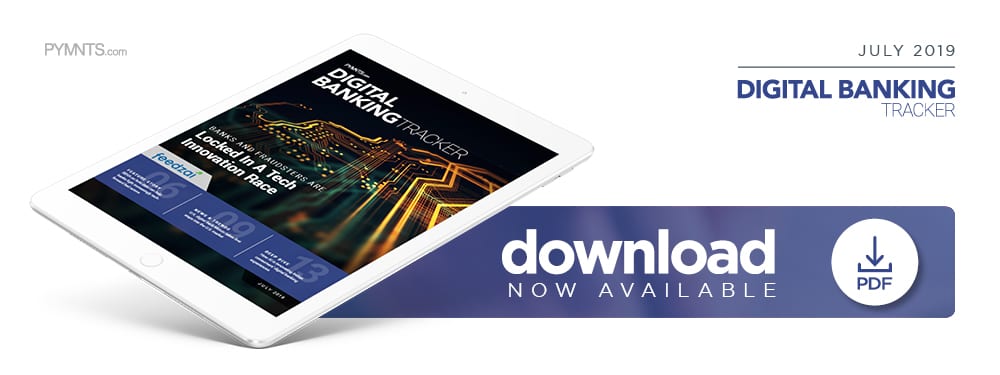Banks And Fraudsters Locked In Tech Innovation Race

While FIs are turning to artificial intelligence (AI) and machine learning (ML) to keep bad actors out, fraudsters are using that same tech to muscle their way in. In the latest Digital Banking Tracker, Brian Fricke, BBVA’s chief information security officer, tells PYMNTS how banks can use data points like geolocations and behavioral tags to out-AI the fraudsters.
Nearly three-quarters of U.S. FIs report growing losses attributed to online and mobile fraud, meaning it is imperative for them to invest in new solutions to thwart bad actors. Solving such issues, though, requires FIs to not only improve their fraud defenses, but also maintain the fast and efficient services customers have come to expect.
An increasing share of FIs are countering fraud by upping their investments in advanced learning technologies like AI and machine learning (ML). Unfortunately, FIs are not the only ones taking advantage of these tools: Fraudsters are just a step behind with their own applications.
As such, the rapid pace of technological innovation is both an invaluable advantage and a significant issue for banks that need to provide fast and engaging customer experiences, according to Brian Fricke, BBVA’s chief information security officer.
“As technology becomes more prolific and acceptable to all corners of the earth, (it’s also) becoming (a) facilitator of fraud because it’s much easier to try to commit fraud,” he explained. “So, we see now the introduction of AI and ML and all of these other very unique and interesting approaches to data, and that’s what we’re seeing – just that proliferation of technology increasing the rate at which these [attacks] are attempted.”
In a recent interview with PYMNTS, Fricke discussed how banks can better approach technology in the battle against fraudsters when it comes to customer security.
The Key to Fraud Protection and Customer Experience
Banks’ access to a global pool of customer data is one of the main tools they can leverage to protect consumers from fraud. Like many in banking, Fricke views data as “the new oil.”
“Data is [the banking industry’s] biggest asset in the fight against fraud,” he said. “The more data points we have, the better.”
It is becoming harder for banks to rely solely on personally identifiable information (PII) to authenticate customers, as roughly 7.5 billion consumer records were stolen in 2017 and another five billion were compromised in 2018. FIs are instead taking other data points – ranging from customers’ individual geolocations to whether they normally use certain devices – into account, Fricke stated.
“[We are] collecting more reliable data points and [are] able to craft a profile of that consumer,” he explained. “[This is] not so we know what they’re buying so we can target them for advertising, but purely so we can say there’s a certain … likelihood that this consumer is accessing their money and it really is them.”
Such authentication mechanisms can keep consumers’ experiences both quick and relatively frictionless, which is an important consideration as banks compete across global markets. It is also worth noting that many consumers value measures such as receiving pop-up security notifications when they transact with their banks. The lack of such solutions can lead to increased fraud, Fricke said.
“Most consumers, when they start to use the [banking] applications, are more forgiving when they see a security notification pop-up to challenge them,” he said. “It can be annoying, but we hope that we’re balancing the security and usability formula right … as an industry. That’s a challenge everywhere.”
Balancing security with consumers’ needs for speed and efficiency will only get harder, however, as fraudsters’ access to advanced technologies expands. As such, Fricke explained, banks that want to stay one step ahead of bad actors will also need their customers to remain vigilant.
The Future of Technology and Fraud Protection
Since fraud attacks are unlikely to decrease anytime soon, it’s imperative for FIs to both invest in advanced learning technologies and focus on educating consumers on the latest protection measures.
“We really need our consumers to be aware and be engaged in their own self-protection,” Fricke said, adding that they do seem to be increasingly informed on fraud and potential risks. “There are more exposés, more documentaries, more news articles … to help raise that awareness and consciousness in our culture. Having that security mindset is not a bad thing.”
Data is likely to remain “the new oil” for the foreseeable future, and FIs must continue to make safeguarding it a top priority. As technological innovation expands in the banking space, it will become only more critical for consumers and banks to work together on fraud prevention.

